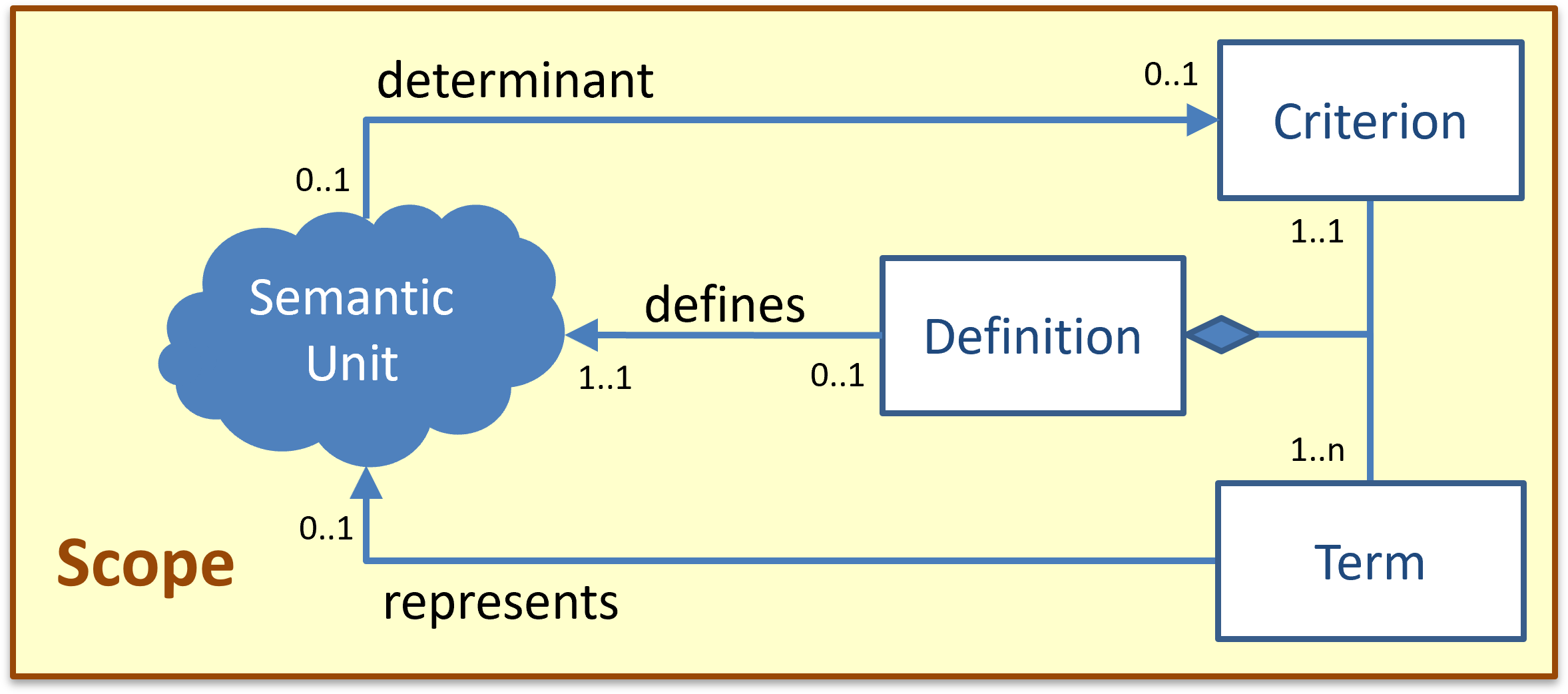Definition Pattern
This mental model describes the relations between a concept (or any other semantic unit), the term(s) that are used to refer to it, and the criteria to use for determining whether or not something is an instance (example) of that semantic unit.
Purpose
The purpose of this mental model is to provide a solid basis for
- mechanisms that enable people to understand others;
- authoring texts that use terms whose definitions have a high likelihood of being understandable by the intended audience of the text;
- developing terminologies that can be used within a group of people.
Introduction
Cognitive science has it that people have their individual ideas, concepts, etc. for making sense of the world around them. These things, that are called "semantic units" in cognitive science, are intangible. They are part of one's mind, and cannot readily be communicated to others.
People have created representations of such semantic units that are tangible, and therefor can be used in communications. Words or phrases are one example, but people also came to use symbols, signs, sounds etc.
The problem here is that there typically is no guarantee that people use such representations to refer to the same semantic units. The result is that words or phrases may be ambiguous, or conflated.
Fortunately, all of us have learned 'the meaning' of a large number of words and phrases, that is: what they mean in the social, cultural, national context in which we have grown up. They are the basic words of our mother tongue. The context in which we grew up ensured that the people therein understand these basic words in the same way, that is: for all practical purposes.
This is the basis on top of which we can introduce new terms, and describe concepts that are new, or that are particular specializations of other concepts. Such descriptions should enable others that are to understand these concepts. Ideally, they are criteria that enable others to determine what is, and what is not, an instance (or: example) of the concept.
Such criteria can be tested for validity:
- Devise an arbitrary use-cases in which people can apply the criteria to something.
- Have all participants determine whether or not this something complies with the criteria.
- If there are participants that have a different judgment, they have a different understanding. To fix this may require adjustment of the criteria
- The more use-cases are devised in which people have the same judgments, the greater the likelihood that they have the same understanding of the concept that is being described.
Formalized model
Here is a visual representation of this pattern, using the following notations and conventions:

The figure shows semantic units, using a cloud-like symbol to illustrate that this is something intangible. It also shows that the semantic unit is part of a scope, which typically contains several (i.e., a lot) of them.
Within the context of its scope, every semantic unit:
- can have at most one determinant, i.e., a criterion (a description) that can be used to determine whether or not something is an instance (or: example) of that semantic-unit.
- can be represented by any number of words or phrases (terms), which are synonyms (or aliases) of each other.
- can have at most one definition, which is the composition of all terms that are used to refer to the semantic unit, and the (single) criterion that is its determinant.
Thus, a definition only exists for a semantic unit in a scope if the determinant exists, and there is at least one term that is used within that scope to refer to it.